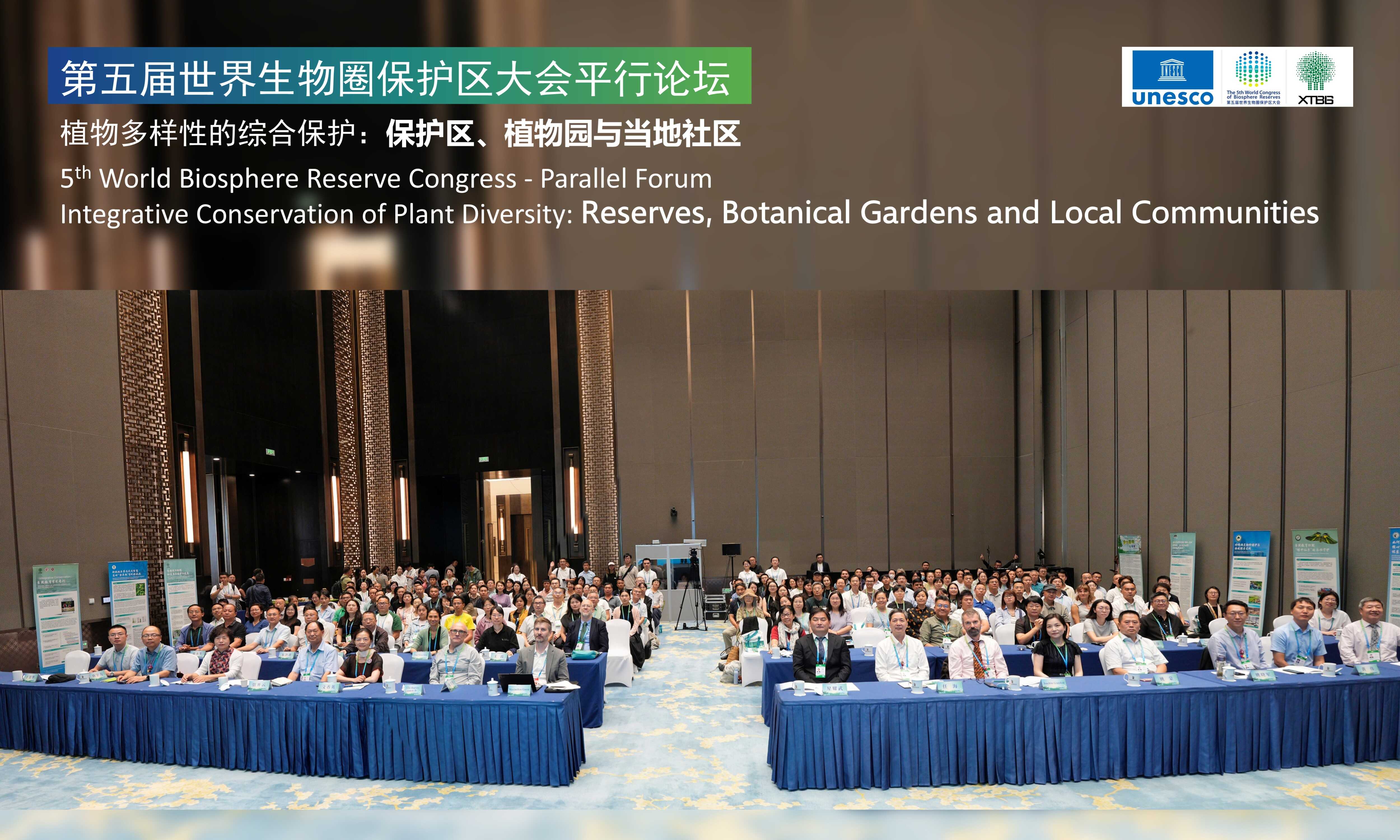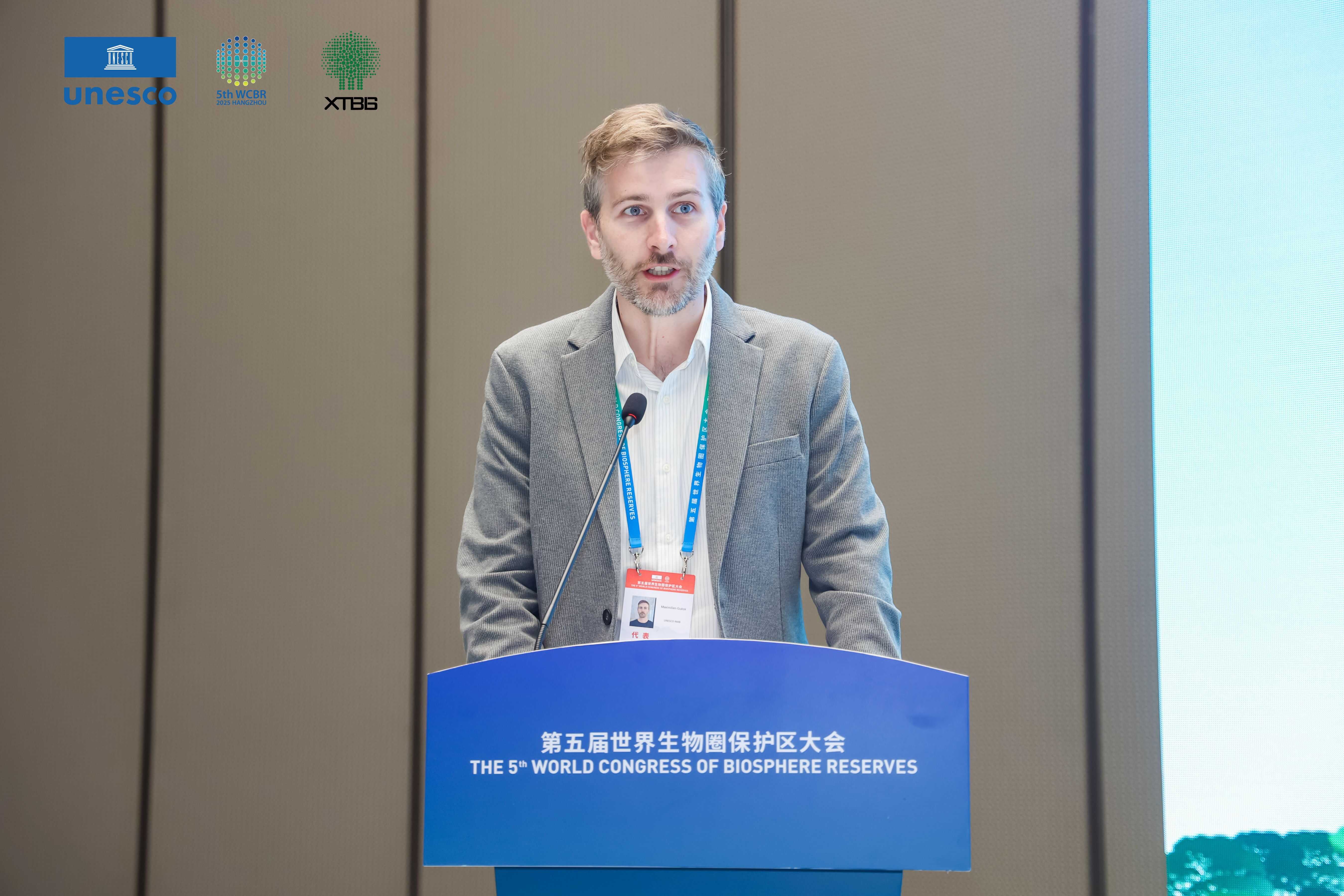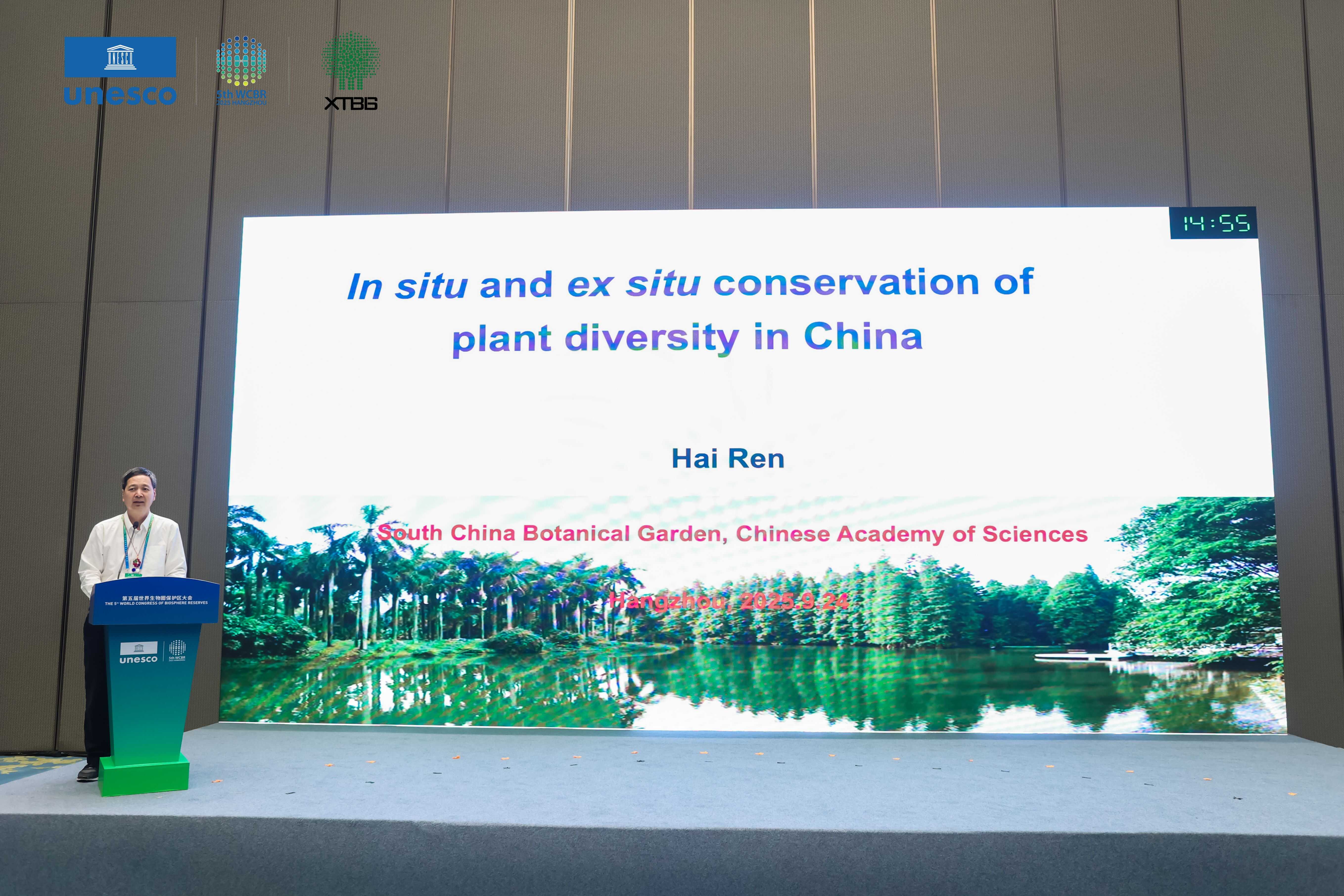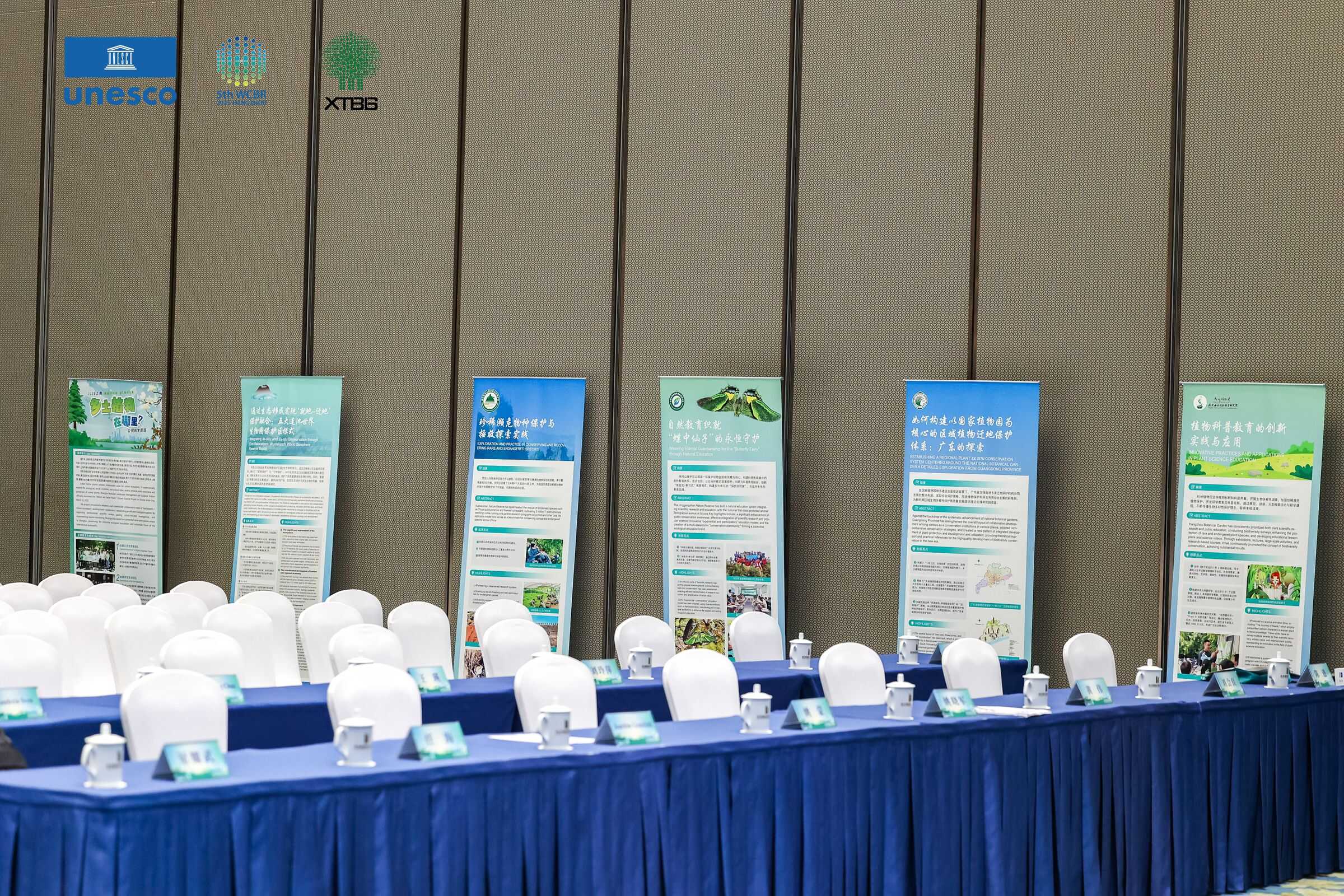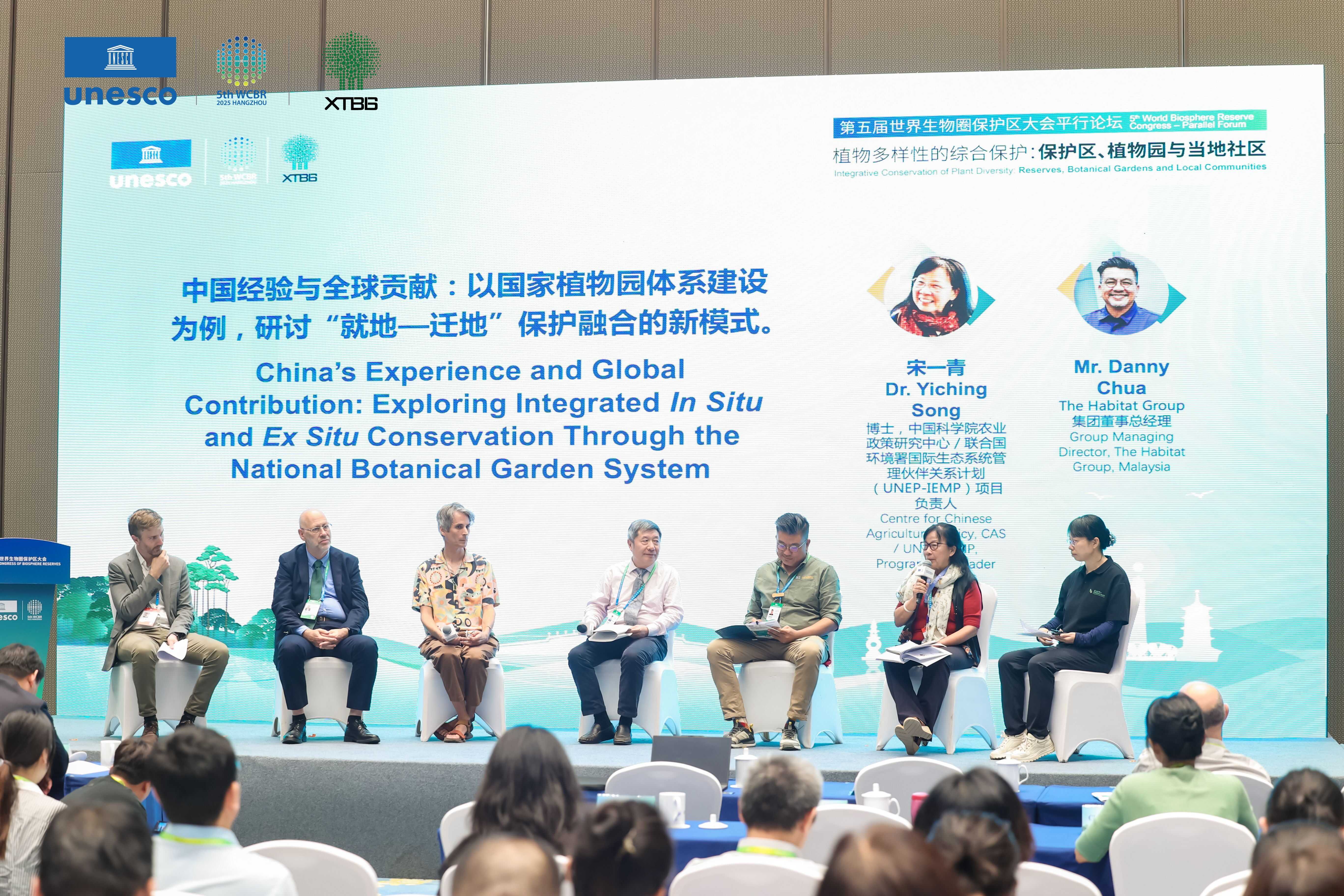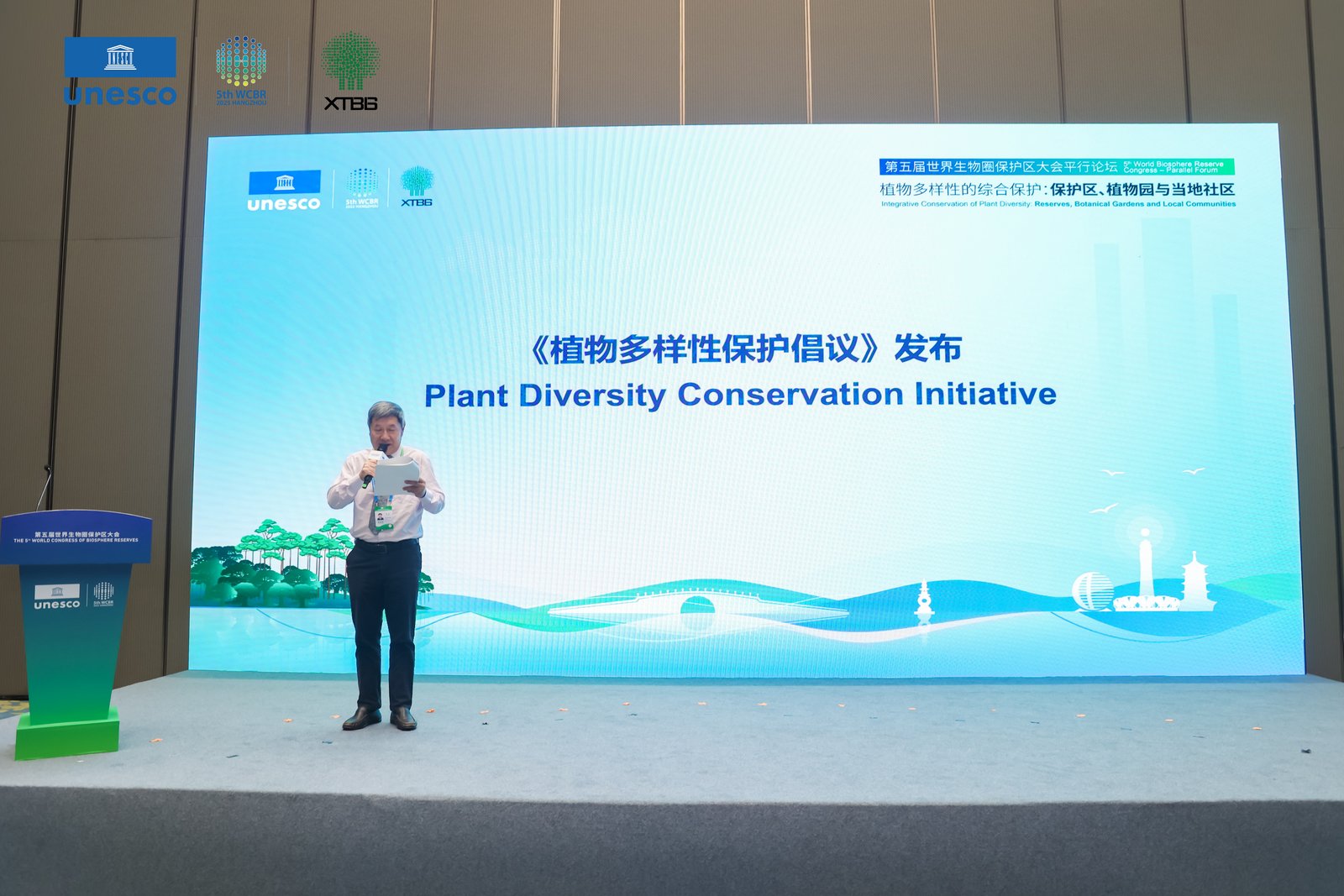| About Us |
| News |
| Announcement |
| Research |
| Conservation & Horticulture |
| Public Education |
| Graduate Study |
| Scientist |
| International Cooperation |
| Resources |
| Annual Reports |
| Publications & Papers |
| Visit XTBG |
| Societies |
| XTBG Seminar |
| Open Positions |
| CAS-SEABRI |
| PFS-Tropical Asia |
| Links |
| Location:Home > News > News Updates |
| Global Plant Diversity Conservation Requires Collaborative Approaches |
|
Plant diversity loss is a transboundary crisis requiring collective action. It remains our collective responsibility to recognize the value of plant diversity, ensure its protection, and integrate it into sustainable development practices worldwide. By fostering collaboration among nature reserves, botanical gardens, local communities, and schools, we can enhance the adaptive capacity of plant diversity and secure equitable benefits for all cultures, future generations, and the planet as a whole. This call to action was highlighted at the Parallel Forum on Integrated Conservation of Plant Diversity, held during the 5th World Biosphere Reserve Congress in Hangzhou. The forum brought together over 200 international stakeholders—including researchers, botanical garden directors, protected area managers, local community representatives, and leaders from international organizations—to address the critical challenge of safeguarding global plant diversity. Amid growing threats from climate change, habitat degradation, and unsustainable resource use, the forum emphasized the need to make collaborative conservation a global priority. The participants had in-depth discussion on the synergistic roles of botanical gardens (as hubs for ex-situ conservation), nature reserves (as in-situ strongholds), and local communities (as custodians of traditional knowledge). They regarded that aligning these efforts forms an irreplaceable foundation for effective conservation. "In the face of climate change and biodiversity loss, plant conservation demands innovative, integrated solutions. Isolated measures are no longer sufficient," said Dr. XING Yaowu, director of Xishuangbanna Tropical Botanical Garden (XTBG) of the Chinese Academy of Sciences.
Dr. Maximilien Gueze from the UNESCO Man and the Biosphere (MAB) Programme Secretariat underlined the critical role of plant diversity. "Plant diversity is the cornerstone of ecosystem health and human well-being. Botanic gardens, with their expertise in integrating in-situ and ex-situ conservation, offer valuable models for global initiatives.” Dr. REN Hai of South China Botanical Garden stressed the importance of establishing a coordinated system of protected areas and ex-situ conservation networks to support green development and secure strategic biological resources. An international perspective was provided by Dr. Joachim Gratzfeld of Botanic Gardens Conservation International (BGCI), who pointed to a significant funding gap. "Plants receive disproportionately low funding compared to other environmental sectors, yet they form the core of ecosystems, providing food, habitat, and essential services," he noted. Dr. Chuck Cannon from the Singapore Botanic Gardens shared the city-state's 'City in Nature' vision, proposing botanic gardens as vital hubs in urban landscapes that support species conservation and foster collaboration. The participants unanimously agreed that plant diversity is a non-negotiable pillar for planetary health, climate resilience, and the achievement of the UN Sustainable Development Goals. China’s approach to ecological governance, particularly its development of a National Botanical Garden system, was recognized as a promising model for successfully integrating conservation pillars. The forum also stressed that long-term success depends on robust public education, community engagement, and breaking down barriers to international knowledge sharing. A case in point is XTBG’s collaboration with local communities to rediscover and develop an eco-friendly mosquito repellent from Adenosma buchneroides, demonstrating how ethnobotanical research can support both conservation and rural revitalization. The participants agreed to advance closer cooperation toward establishing a global network for plant conservation, thereby safeguarding the planet’s green gene bank for future generations. The forum concluded with the release of the Plant Diversity Conservation Initiative. "As key stakeholders, the collaboration between botanic gardens, protected area authorities, and local communities is vital for biodiversity conservation," said Prof. CHEN Jin of XTBG.
Participants at the Parallel Forum on Integrated Conservation of Plant Diversity. (Image by XTBG)
Prof. XING Yaowu delivers an opening speech. (Image by XTBG)
Dr. Maximilien Gueze highlights critical role of plant diversity. (Image by XTBG)
Prof. REN Hai stresses importance of a global plant diversity collaborative network. (Image by XTBG)
Dr. Joachim Gratzfeld points to funding gap in plant conservation. (Image by XTBG)
Dr. Chuck Cannon shares 'City in Nature' vision (Image by XTBG)
Cases of collaboration with local communities. (Image by XTBG)
Prof. CHEN Jin chairs the forum. (Image by XTBG)
Prof. CHEN Jin declares release of the Plant Diversity Conservation Initiative. (Image by XTBG)
Prof. XING Yaowu releases the Plant Diversity Conservation Initiative. (Image by XTBG)
Dr. Joachim Gratzfeld releases the Plant Diversity Conservation Initiative. (Image by XTBG) |
| Appendix Download |
|
|
